Color
Ruby derives its name from the Latin word "ruber," meaning red. It is the name given to the red
variety of corundum, which in any other color is called sapphire. Pink corundum is not designated as a ruby,
but is instead labeled pink sapphire.
- Hue refers to the ruby's basic color - red, slight orange, strong orange, slight purple, and
strong purple.
- Saturation (also called color purity and intensity) is the extent to which the hue is masked
by brown or gray.
- Tone refers to the amount of color in the ruby ranging from very light to very dark.
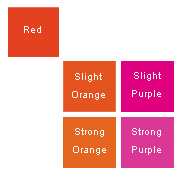
Red ruby Hues ranging from
Slight Orange to Strong
Purple. Red is ideal.
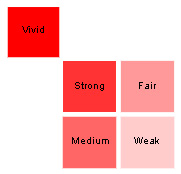
Ruby Saturation showing
color-purity from Vivid to
Weak. Vivid is ideal.
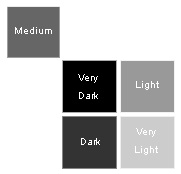
Ruby Tone ranging from
Very Dark to Very Light.
Medium tone is ideal.
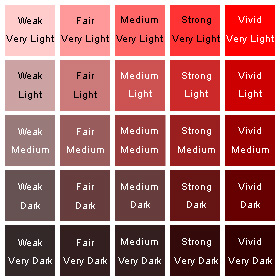
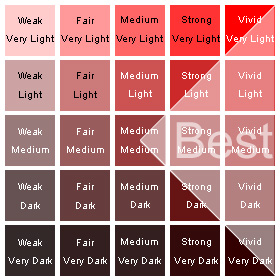
Red ruby color table combining saturation and tone. The table on the right shows the most
desirable color range.
The most sought after colors tend to be vivid, pure and highly saturated devoid of hints of
brown or gray. You will often see dark black or gray areas in the ruby, known as extinction.
Extinction is affected by the tone, cut, lighting quality and lighting position. Fewer areas
of extinction are preferred. Lighter-colored, shallower stones normally show less extinction
than darker, deeper-cut stones.
Unlike diamonds that have a 23 letter color-grading system, rubies lack a convenient method
to characterize their color. This is due in large part to the extreme ranges of tone, hue
and color purity in rubies. Judging the ideal color in a ruby has been largely left up to
the eye of the beholder.




 Red ruby color table combining saturation and tone. The table on the right shows the most
desirable color range.
Red ruby color table combining saturation and tone. The table on the right shows the most
desirable color range.